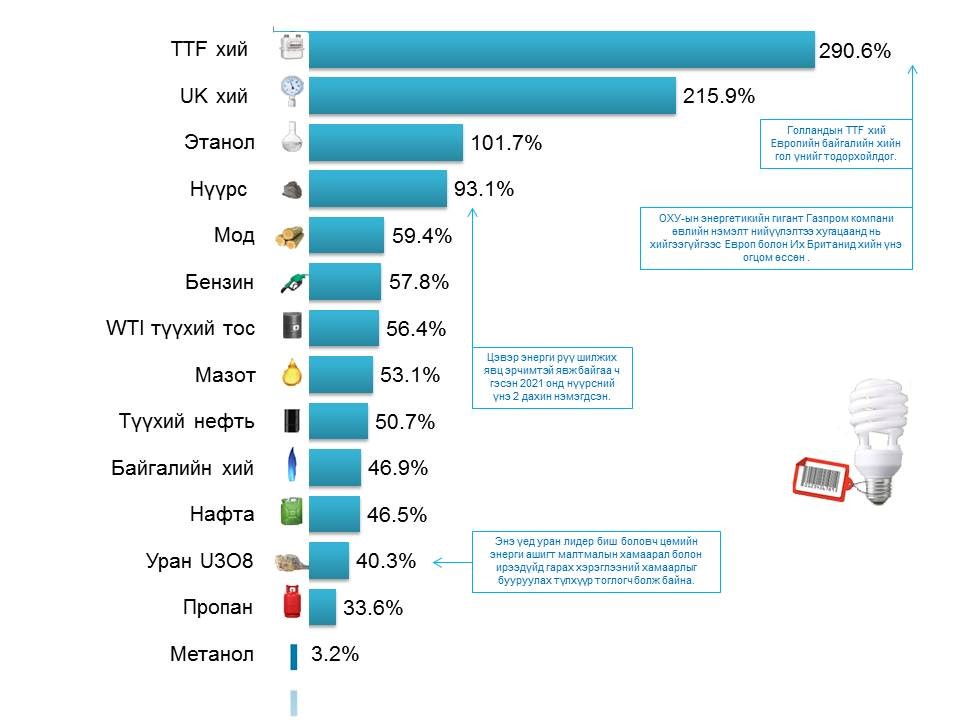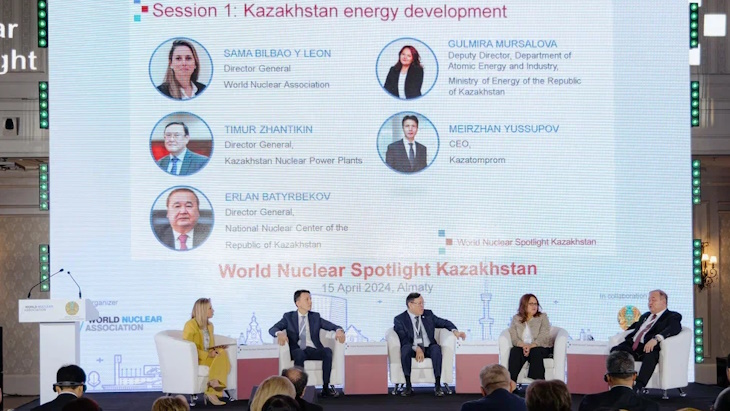ЭРЧИМ ХҮЧНИЙ ЭХ ҮҮСВЭРИЙН ҮНИЙН ӨӨРЧЛӨЛТ-2021 ОН

2021 онд эрчим хүчний эх үүсвэрийн үнэ хэрхэн өөрчлөгдсөн бэ?
A year after the start of the COVID-19 pandemic, the world started to reopen and generate insatiable energy demand. Supply shortages and the clean energy transition further fueled the rise of all energy commodities.
Even in a year where markets and commodities performed strongly, energy prices stood out. The energy component of the Goldman Sachs Commodity Index (GSCI) rose by 59% in 2021, returning more than double any other component in the index.
Let’s take a look at how energy commodities performed in 2021, as tracked by Trading Economics and TradingView.
How Much Did Energy Prices Climb in 2021?
After dipping into negative prices in April of 2020, WTI crude oil had a strong bounce back.
Many of crude oil’s derivative products also increased in price by double digits, resulting in higher gas prices at the pump. The U.S. average retail price for gasoline increased by 45.8% to close at $3.28/gal, while wholesale prices of RBOB gasoline also climbed by 57.8%.
Natural gas prices in Europe and the UK saw the biggest price increases in 2021, jumping more than 200%.
They were followed by ethanol, a biofuel that oil refiners are required to blend with their products. This requirement, along with the price rises in corn and sugar (ethanol’s primary raw materials around the world), made this hot commodity even more expensive.
Rising Natural Gas Prices Fuel Tension and Unrest
While the U.S. saw increases in its gasoline prices as well, these were mild compared to surges in Europe and elsewhere.
With close to 43% of Europe’s total gas imports coming from Russia, no additional supply was provided during the cold winter months. This was compounded as Germany’s approval of the Nord Stream 2 pipeline has remained in limbo.
So far, 2022 has been a continuation of these trends. For example, liquified petroleum gas (LPG) prices have nearly doubled due to unrest in Kazakhstan. The Kazakhstan government’s decision to lift price controls on LPG (the primary fuel for Kazakh cars) saw prices surge and led to days of protests and Russian intervention.
Coal Stays Strong Despite the Clean Energy Transition
Despite 2021’s emphasis on the clean energy transition, coal prices nearly doubled as the world was unable to shake off its dependence on the fossil fuel.
Even pledges from the COP26 climate change conference, such as China’s to reduce coal consumption after 2025, are not yet having an impact on prices. That’s because the country is still planning to add up to 150 gigawatts of new coal-fired capacity before then.
On the other hand, uranium couldn’t keep up with the price rises of fossil fuels. Although the energy metal had a breakout year as one of the recently renewed hopes for cleaner energy, the outlook for nuclear energy adoption and development is still mixed.
While China is expected to invest as much as $440B into new nuclear power plants over the next 10 years, Germany shut down half of its remaining plants in 2021.
After the surge of energy prices in 2021, nations will need to carefully manage their clean energy transitions to avoid further unsustainable price rises.




